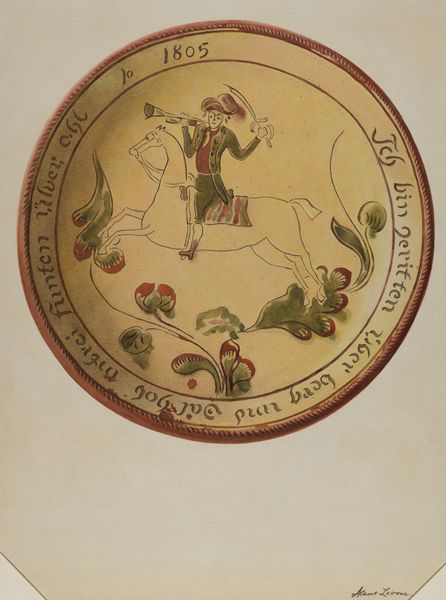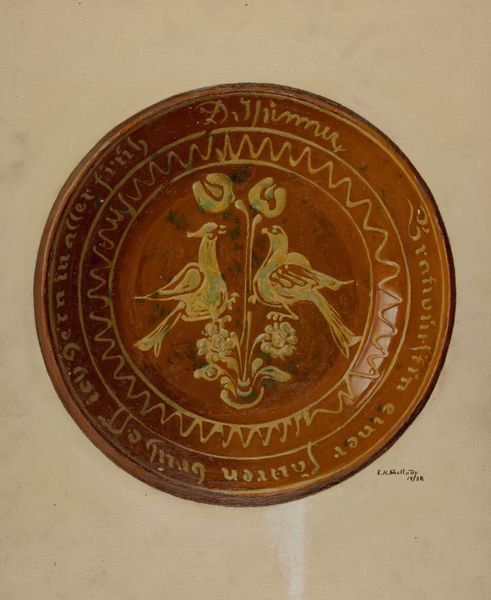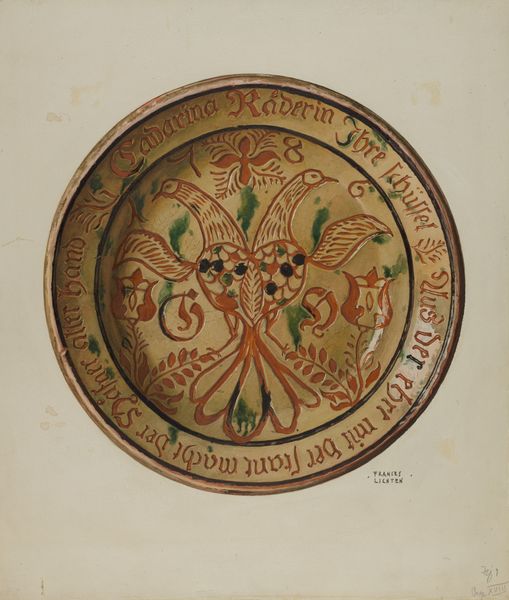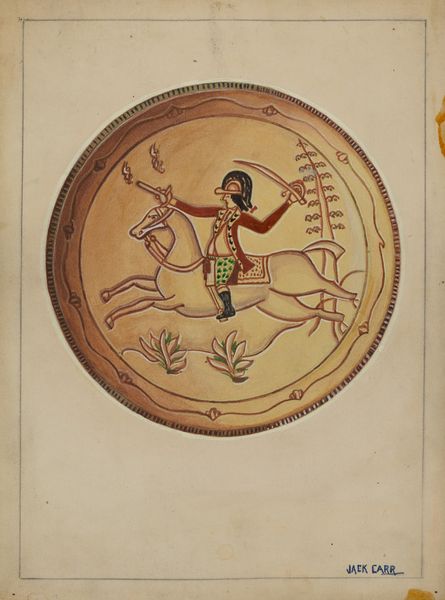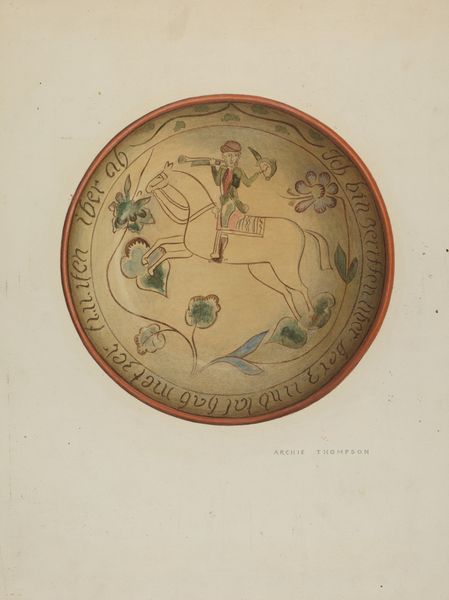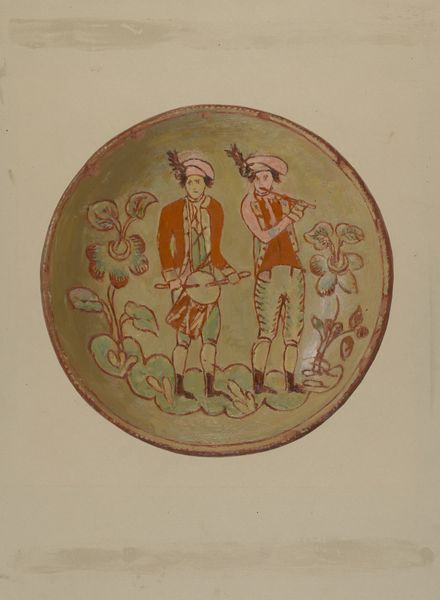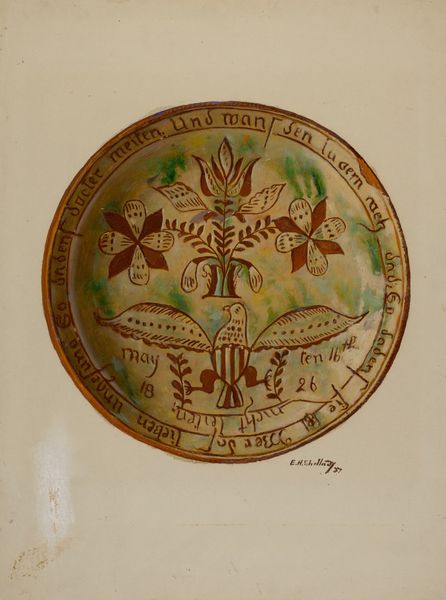
drawing, coloured-pencil, print, watercolor
#
portrait
#
drawing
#
coloured-pencil
# print
#
oil painting
#
watercolor
#
coloured pencil
#
folk-art
#
watercolour illustration
#
genre-painting
#
academic-art
#
watercolor
Dimensions: overall: 41 x 38.2 cm (16 1/8 x 15 1/16 in.) Original IAD Object: Rendered actual size.
Copyright: National Gallery of Art: CC0 1.0
Curator: This is Elmer G. Anderson’s drawing, Pa. German Pie Plate, dating from around 1937. Anderson renders it with colored pencil, ink and watercolor; the work reflects the visual characteristics often found in folk art. Editor: My immediate reaction is its earthiness; the color palette of browns, reds and off-whites imbue the scene with a folksy aesthetic. The forms appear purposefully unsophisticated. Curator: This piece references a specific type of decorative ceramic pie plate common among Pennsylvania Germans from the late 18th and early 19th centuries. They were often given as gifts or used to mark special occasions, becoming symbolic of cultural identity and community bonds. The script bordering the circle also points to its specific origin. Editor: I agree; the circle itself creates a clear boundary and its central image contains a kind of doubling; two figures are presented, mirrored to a degree, in an almost iconic way. I am drawn to how this formal structure works to direct the viewers’ eyes, focusing attention on the central subjects within that visual framework. Curator: Absolutely. The image invokes genre painting in the 18th century—which reflects the cultural aspirations of many European settlers in the American colonies at that time. The attention to representing specific groups of people also reminds me of discussions around class and representation during the same period. Editor: From a technical point of view, I appreciate the watercolor’s ability to create depth in subtle areas. Though seemingly simple, it adds dimension to an otherwise somewhat flattened picture plane. Curator: Considering the socio-political elements evident in the image adds context; we must remember these plates often expressed a blend of European heritage, local traditions and evolving American identities. Editor: The artist draws heavily from various traditions. As such, analyzing such an artwork teaches one to appreciate simplicity and directness in expressing shared experience and cultural narratives.
Comments
No comments
Be the first to comment and join the conversation on the ultimate creative platform.
